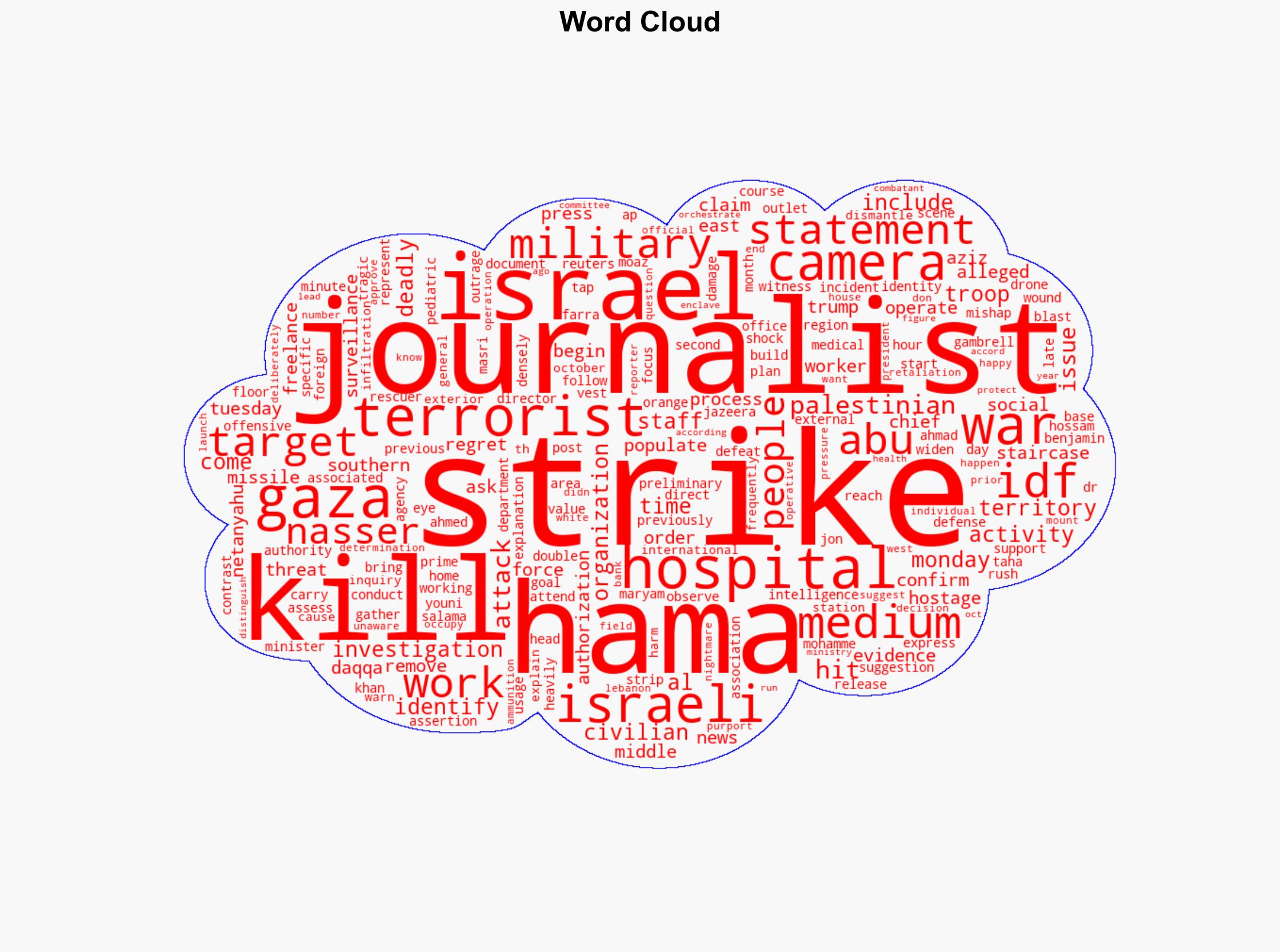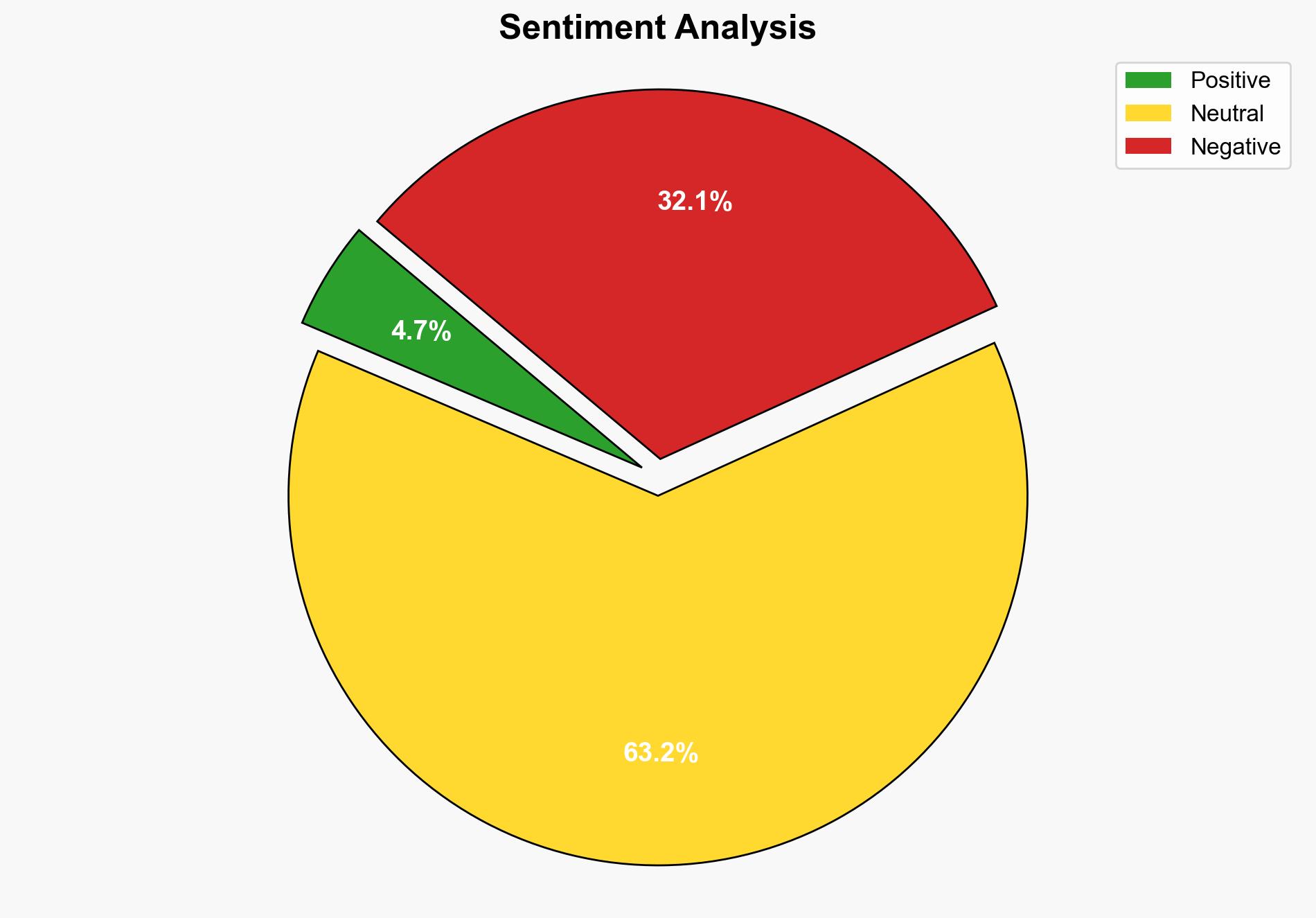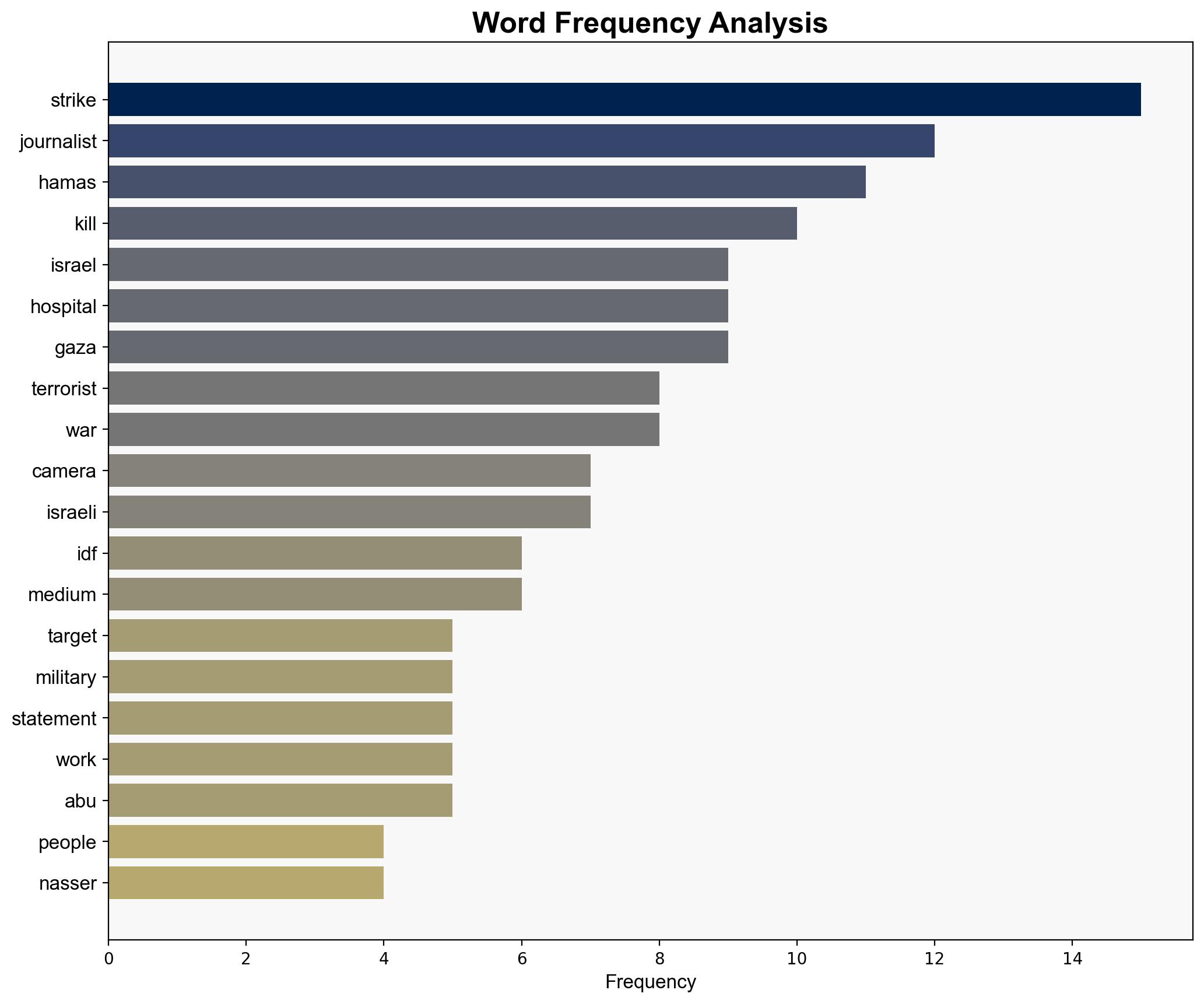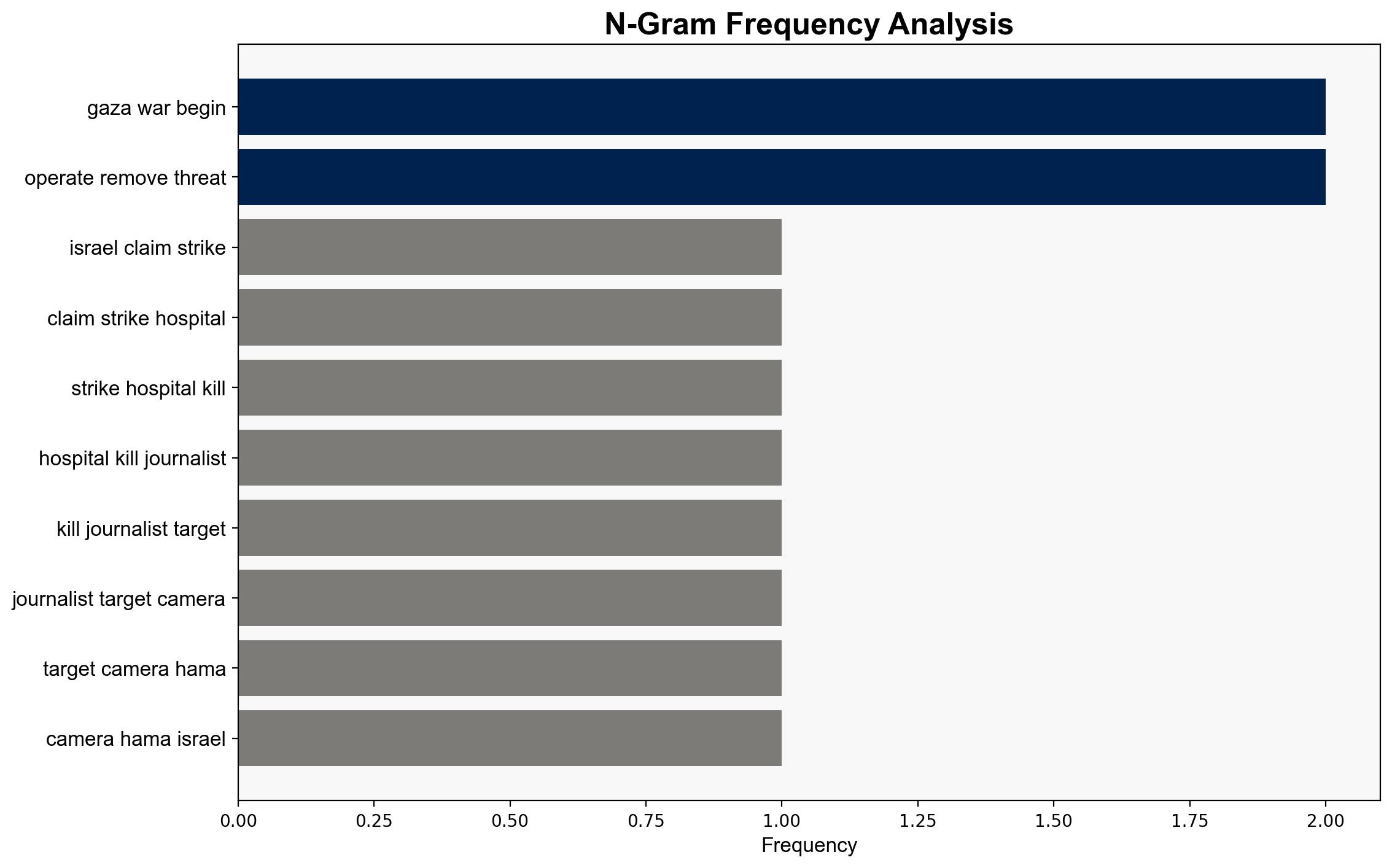Israel says strike that killed journalists targeted a camera used by Hamas – CBS News
Published on: 2025-08-26
Intelligence Report: Israel says strike that killed journalists targeted a camera used by Hamas – CBS News
1. BLUF (Bottom Line Up Front)
The most supported hypothesis is that the Israeli strike was intended to target a Hamas surveillance camera, but resulted in unintended casualties, including journalists. Confidence in this assessment is moderate due to conflicting statements and lack of conclusive evidence. Recommended action includes urging for an independent investigation to clarify the incident and prevent future occurrences.
2. Competing Hypotheses
1. **Hypothesis A**: The Israeli military strike was a deliberate action targeting a Hamas surveillance camera, with the unfortunate collateral damage of journalists being an unintended consequence.
2. **Hypothesis B**: The strike was a miscalculation or operational error, with the camera not being a legitimate target, and the explanation serves to justify the incident post-factum.
Using the Analysis of Competing Hypotheses (ACH) 2.0, Hypothesis A is slightly better supported due to the Israeli military’s statement and historical context of Hamas using civilian infrastructure for military purposes. However, the lack of independent verification and conflicting statements from Israeli leadership weaken this support.
3. Key Assumptions and Red Flags
– **Assumptions**: It is assumed that the Israeli military’s intelligence on the camera’s use was accurate and that the strike followed standard operational protocols.
– **Red Flags**: Contradictory statements from Israeli officials, lack of independent verification of the camera’s use, and the high-profile nature of the casualties raise questions about the narrative’s accuracy.
– **Blind Spots**: Potential biases in reporting and intelligence interpretation, as well as the absence of on-ground verification, could skew the understanding of the incident.
4. Implications and Strategic Risks
The incident risks escalating tensions in the region, potentially leading to increased hostilities and international condemnation. It may also affect Israel’s diplomatic relations and its standing in global public opinion. The targeting of journalists could deter media coverage, impacting the flow of information from conflict zones.
5. Recommendations and Outlook
- **Mitigation**: Advocate for an independent investigation to ensure transparency and accountability, which could help de-escalate tensions.
- **Exploitation**: Use diplomatic channels to reinforce the importance of protecting journalists and civilians in conflict zones.
- **Scenario Projections**:
– **Best Case**: Independent investigation clarifies the incident, leading to improved operational protocols and reduced civilian casualties.
– **Worst Case**: Escalation of hostilities and further targeting of civilian infrastructure, leading to widespread international backlash.
– **Most Likely**: Continued tension with sporadic incidents, maintaining the status quo of conflict intensity.
6. Key Individuals and Entities
– Benjamin Netanyahu
– Hossam al Masri
– Mohamme Salama
– Maryam Abu Daqqa
– Moaz Abu Taha
– Ahmad Abu Aziz
7. Thematic Tags
national security threats, counter-terrorism, regional focus, media freedom, conflict escalation




